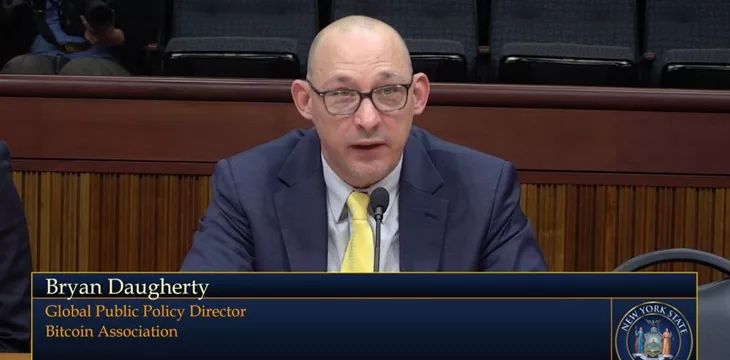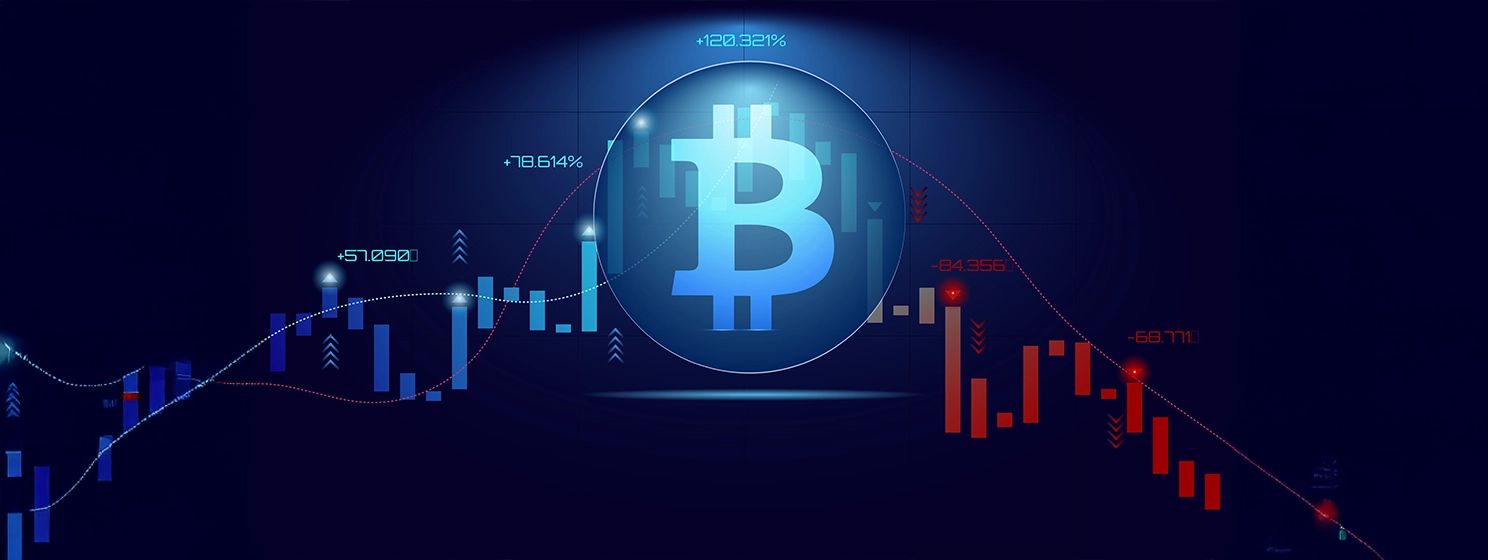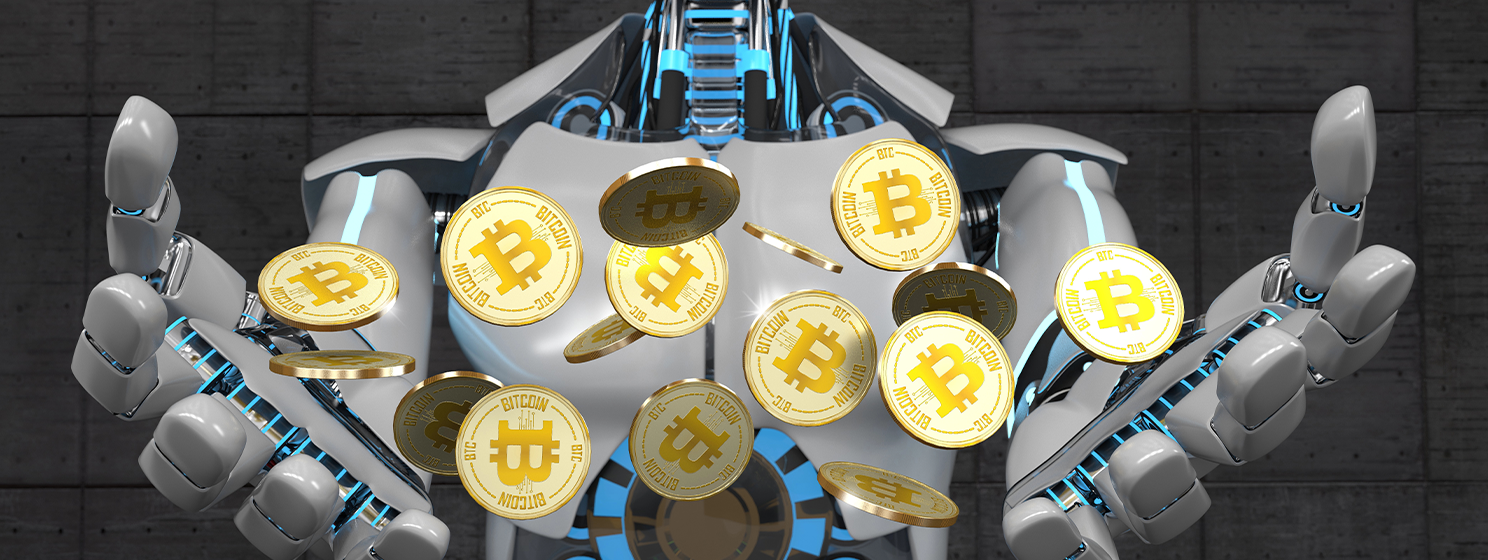|
Getting your Trinity Audio player ready...
|
We must move away from the “casino-like” world of digital asset speculation and focus on blockchain’s transformative capabilities in other areas. BSV Blockchain Association Global Public Policy Director Bryan Daugherty testified this week before the New York Senate’s Standing Committee on Banks, saying that a scalable proof of work (PoW) blockchain like Bitcoin was the only way to realize the technology’s true potential.
The Committee hearing, chaired by NY State Senator James Sanders Jr., looked at several aspects of the blockchain/digital asset industry that could either benefit or negatively impact the community. The first portion looked at regulation and investment risk, while the second examined in more detail the ecological effects of PoW mining in New York State. A third segment looked outside blockchain to the wider fintech world and its issues for regulators and businesses.
Daugherty stressed that it’s crucial to distinguish between digital assets and blockchain technology, which are often conflated. “This narrow perspective (on speculative trading) fails to recognize the transformative capabilities in numerous fields,” he said.
Blockchain has far broader use cases than just finance, he stated, listing benefits in safeguarding data integrity and cybersecurity, streamlining public services like transit, healthcare, voting and land registries, identity management and fraud limitation, and sustainable agriculture.
Panel’s strong focus on blockchain’s environmental impact
His testimony followed that of Elizabeth Moran, NY policy advocate for environmental law organization Earth Justice. Her organization was particularly concerned about PoW’s ecological impacts, primarily since 38% of the world’s PoW assets are mined in the United States, but the industry in total would be in the top 30 energy consumers if it were a country. PoW mining, and particularly BTC, uses energy equivalent to half the existing banking sector with projections it will surpass it, she said. All this places excessive stress on power grids and raises energy costs for others in the community. Moreover, promises to use renewables and feed supplies back into the grid have fallen short of expectations.
Ranking member Sen. George M. Borrello focused on Moran’s environmental claims in question to Daugherty and co-panelist Cody Carbone, Vice President of Policy at the Chamber of Digital Commerce. “Can you two speak on that?” he asked, noting he agreed with Moran’s concerns.
Answering the senator, Daugherty was able to paint a more detailed picture of the differences between BSV and other Bitcoin-like protocols, namely BTC (though he also pointed out Ethereum still has limited ability to scale to meet needs, even after its switch to proof-of-stake). “There is a grand misunderstanding about the actual energy consumption of Bitcoin; moreso of the competing protocols of Bitcoin,” he said.
“The reality is, Bitcoin BTC, which has a one-megabyte block every ten minutes which collects data, is limited to how much data it can actually use, so it does not scale. It does seven transactions per second. If we were to share email with a technology that does seven transactions per second, none of us would ever receive that email,” Daugherty explained.
He compared Bitcoin to another energy-intensive industry: airlines. A plane carrying 300 passengers uses the same amount of fuel as one with unlimited seats. Comparing BSV to that hypothetical unlimited-sized airplane, he said there would be “no shortage of uses” for a properly scalable blockchain network.
“Bit refers to data, and Coin to finance … Bitcoin is the fusion of data and finance, where if you remove that one megabyte limit and have an unbounded block size every ten minutes, now you’re able to actually have—from BTC which is about 1200kg of CO2 per transaction which is absolutely ridiculous, to other protocols which use competing proof of work, scalable proof of work like BSV, that is less than 2kg of CO2 per transaction, even today. That’s because the unbounded amount of transactions that can be included in a block,” he stated.
Chairperson Sanders noted that Moran (and regulators who testified previously) had “come up with an almost damning picture of the industry as it currently stands” and asked what best practices the industry should adopt.
“We have to think about what we’re actually talking about … if it’s not doing any good, why are we spending any energy on it whatsoever?” Daugherty answered. Most (non-BSV) mining is simply “fishing for the block subsidy” and speculating on its value, and “unless fees can overtake the actual subsidy, there’s no business here. It’s not going to have any real-world applications.”
Carbone agreed with Daugherty’s assessment, saying that blockchain’s advantages to data security and monetization could outweigh any of the mentioned costs.
Investment and financial regulation issues
Another portion of the hearing looked at the financial regulation and the often Wild West nature of blockchain and digital asset businesses, many of which still saw New Yorkers lose millions in savings despite being located outside the jurisdiction. Sen. Cordell Cleare and guest panelist Assemblymember Khaleel M. Anderson were especially concerned with impacts on the Black community, which they said were disproportionately affected by failed “cryptocurrency” ventures like FTX, Celsius, Terra/Luna, and Voyager.
Christopher D’Angelo, Chief Deputy for Economic Justice at the Office of the NY State Attorney General, was critical of the blockchain industry’s tendency to make bold claims about economic benefits and inclusion, while simultaneously lacking transparency and downplaying investment risks.
Though his office does distinguish between blockchain technology and digital assets, he said often “no need for new digital assets,” which have no intrinsic value and represent no stake in a company or its success.
“The digital asset industry has been singlularly non-compliant in its existing obligations,” he added and said his office receives daily complaints from investors who’d lost their life savings. Cryptocurrency thefts have increased 500% since 2020 alone, and instances of criminal activity have risen 60-fold since 2018—digital assets are “high risk, low regulation, with none of the usual protections.”
Deputy Superintendent of Virtual Currency at the New York Department of Financial Services Peter Marton echoed some of D’Angelo’s concerns. He noted that New York is often the leader in regulating the industry, especially with its “BitLicense” framework introduced in 2015 following earlier debacles like Mt. Gox.
“If they want to replace what exists today, then they need to learn from lessons of the past, too,” he said.
Asked if regulators needed more resources or even an entirely new department, Marton and D’Angelo said engagement and their knowledge/staffing increases had helped a lot. They said there isn’t much need for additional rules, though the situation would be better if digital asset businesses simply followed existing financial rules without trying to skirt them.
CoinGeek Conversations with Kurt Wuckert Jr: Think of Bitcoin mining as financial self-discipline

 12-18-2025
12-18-2025 




